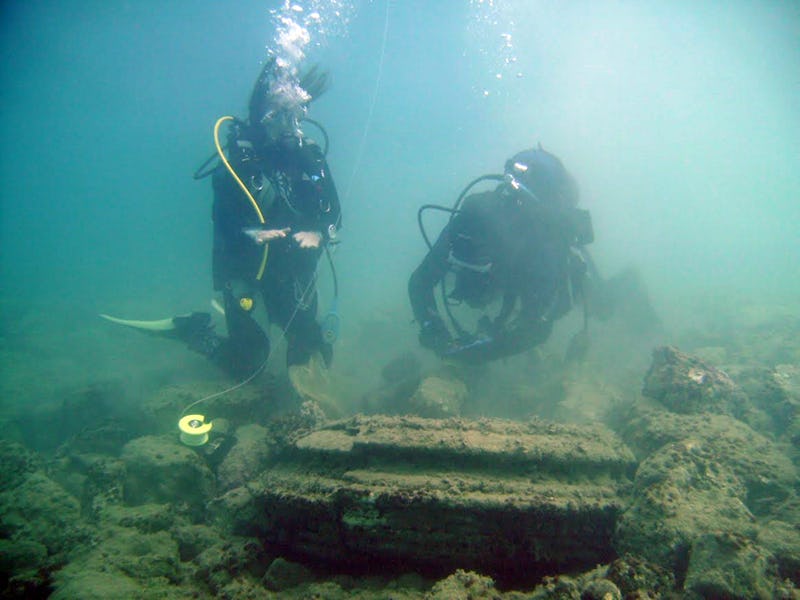Greek 'Lost City' Revealed as Ancient Minerals, Not Civilization
Made by microbes.

A mysterious “lost city” off the coast of the Greek Island Zakynthos startled researchers when they first viewed the intricate piping and disc-like structures from afar. While few people retain much hope of one day finding the long-gone Atlantis, it isn’t often that any viable suitors even surface. So a team of researchers from the UK’s University of East Anglia decided to check out the unusual formations and found that, far from representing traces of a lost civilization, the anthropomorphic artifacts actually formed over 5 million years ago due to a rare confluence of microbes and minerals.
The images are striking, to say the least. In fact, it was a rare act of scientific discipline that prevented these researchers from simply proclaiming the discovery of some lost human city on the strength of the remains’ resemblance to man-made structures. Nobody encounters a five-foot-wide, two-foot-tall disc with an elegantly curved exterior that looks like a bench in the wilds without having visions of ancient civilizations. But the team of researchers analyzed the compositions and found that they were concretions of mostly dolomite with a little pyrite, materials that point to natural, not human, origins.
Despite its manmade appearance, researchers figured these structures may date to the Pliocene Epoch, which began 5.3 million years ago.
It’s easy to imagine casual observers seeing these discs and pipes as manmade, especially in such close proximity to the home of Hellenic culture, but Professor Julian Andrews, from UEAs School of Environmental Sciences, was a little harder to fool.
Divers discovered the intriguing formations, but it took scuba diving researchers to determine their true origins.
“The site was discovered by snorkelers and first thought to be an ancient city port, lost to the sea. There were what superficially looked like circular column bases, and paved floors. But mysteriously no other signs of life – such as pottery,” Andrews said.
The formations were spotted off the coast of Zakynthos, Greece, not far from the heart of Hellenic civilization.
Once a few researchers actually strapped on their scuba gear and descended a couple meters to study the formation, they found even more evidence that they were mineralogical, not manmade.
“We found that the linear distribution of these doughnut shaped concretions is likely the result of a sub-surface fault which has not fully ruptured the surface of the sea bed. The fault allowed gases, particularly methane, to escape from depth,” said Andrews.
The formations were only a few meters underwater but still looked to some like a potentially 'lost city.'
Despite the structures’ natural origins, the researchers were still able to claim a pretty unusual discovery.
“Microbes in the sediment use the carbon in methane as fuel. Microbe-driven oxidation of the methane then changes the chemistry of the sediment forming a kind of natural cement, known to geologists as concretion,” Andrews said. “In this case the cement was an unusual mineral called dolomite which rarely forms in seawater, but can be quite common in microbe-rich sediments.”
The researchers analyzed samples of the materials and found an unusual mixture of minerals.
The concretion was not only rare for its particular geographic region, but the researchers were surprised to find dolomite in such shallow waters as well.
“This kind of phenomenon is quite rare in shallow waters. Most similar discoveries tend to be many hundreds and often thousands of meters deep underwater,” Andrews said.
“These features are proof of natural methane seeping out of rock from hydrocarbon reservoirs. The same thing happens in the North Sea, and it is also similar to the effects of fracking, when humans essentially speed up or enhance the phenomena,” she added.
The discoverers of a lost geological formation.
Whether the discovery of methane seeping into the sea is as exciting as a lost Hellenic city may up for dispute. But we can all agree these researchers, who scuba dive off the Greek coast looking for geological and Hellenistic remains, have a pretty sweet gig.